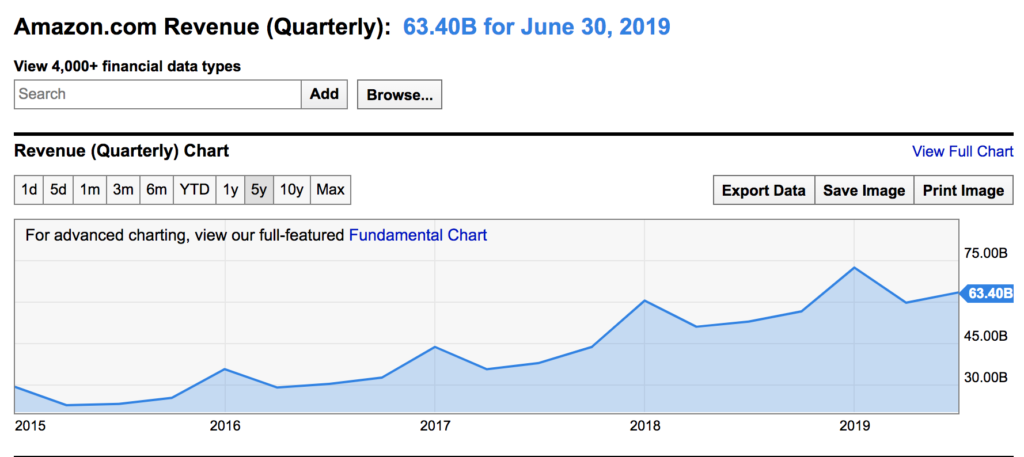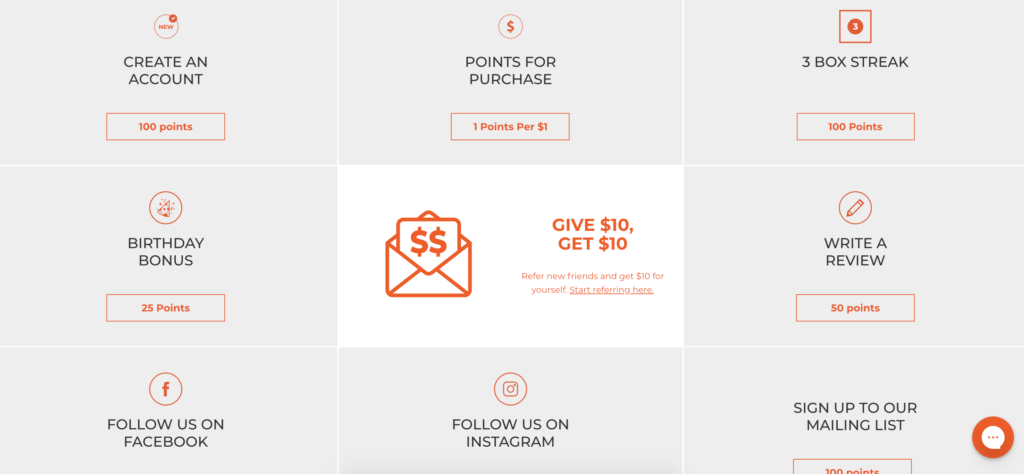November and December are two of the most popular shopping months in the US, where 23% of yearly sales happen over the holidays. It all begins with Thanksgiving, when consumers take off work to celebrate with their families and retailers offer major online promotions and discounts. In 2018, on Thanksgiving day alone, online spending reached $3.7 billion dollars, up 28% from the year before.
But what happens after the holiday season? Unsurprisingly, sales start to fall in January and beyond. While many shoppers take advantage of holiday sales, the vast majority don’t reengage with those same companies the rest of the year. They enjoy their one-time deals, but they don’t build deeper relationships with the brand.

via Ycharts
Every eCommerce merchant has the ability to extract more value from one-time shoppers by providing opportunities for them to be “reactivated” and turned into year-round purchasers. The key is to develop a Dynamic Holiday Marketing Strategy.
What is a Dynamic Marketing Strategy?
Promotions tend to lose their efficacy with returning customers over time. A deal that was initially successful may not work the next month, or even the next week.
Why? A fad may have died out, a social media platform may have become less popular, an upcoming holiday might be consuming everyone’s attention, or any number of other reasons.
Smart marketers create dynamic, constantly evolving marketing strategies to ensure that they are appealing to all customers and their changing needs. To do so, they are constantly experimenting with new forms of communication and analyzing the results.
Types of Dynamic Promotions
Circumstantial Promotions
Marketers are aware of changes in the broader climate and how they impact consumer buying habits. They follow news reports and track upcoming events in order to anticipate these changes and develop appropriate strategies. For example: Just prior to the Winter Olympics, an athletic apparel store could take advantage of the increased media attention on winter sports by offering a “20% Off” promotion on cold weather gear.
Analytics-Based Promotions
Marketers use analytics to understand their consumers’ buying preferences. They ask questions like: What social media channels are my consumers most active on? On which days do they most frequently read our blog? What discounts are most appealing to them? Using data, marketers can analyze the results of these experiments and proceed accordingly. For example: an activewear clothing line that sees that a high percentage of their Facebook followers are high-volume customers may want to offer direct incentives to customers who choose to follow their brand on Facebook.
Leveraging both styles of promotions creates a strategy that encourages shoppers to stay engaged throughout the year. In our next section, we’ll cover how you can use these promotions to achieve lasting growth and success.
Three Dynamic Marketing Practices for Reactivating One-Time Shoppers
1. Diversify Your Outreach Strategy
The Platinum Rule of marketing in the online era is to advertise to your customers where they prefer to be reached. You won’t know what that preferred method is until you test all of your avenues for pulling back disengaged customers. The number of communication mediums is endless, but social media, email, and retargeted ads on third-party websites are typically the most powerful.
Chubbies relies heavily on social media to build its customer relationships. The company takes advantage of Facebook, Twitter, Instagram, YouTube, and Pinterest to attract social media users, so that while some consumers find them through an ad on Facebook, others come across a video on their YouTube page, or a popular tweet.
Coupled with powerful email marketing campaigns, the Chubbies outreach strategy is built to persistently interact with holiday shoppers long after the season has come and gone.
After the holidays: Create various campaigns to promote and engage visitors through multiple mediums. Make sure that you are sending content to the places where consumers want to receive it. Sample strategies include sending out emails a month after Thanksgiving promoting a Christmas discount or placing retargeted ads on websites similar to yours.
2. Vary Discounts
Just because a promotional strategy worked once with a customer doesn’t mean it’ll be similarly impactful with the same consumer in the future. That’s why it’s important to vary your discounts, either through a loyalty program or a temporary discount code. Some consumers may prefer credit discounts, while others prefer a percentage off their sales. You can easily figure this out by A/B testing both options.
In the Bokksu loyalty program, users earn points through creating an account, spending money, and interacting on social media. They can exchange their points for discounts on future purchases.
Using a program that offers multiple discounts allows Bokksu to get a consistent read on redemption trends. Are their customers more likely to save up their points in exchange for bigger discounts? Or are they content to make more frequent purchases using smaller discounts? Looking at simple statistics such as coupon-by-coupon redemptions can go a long way toward helping their team optimize their discount strategy.

via Bokksu
After the holidays: There are numerous benefits to testing out ways of rewarding your customers. Use the time in early January to experiment with varied discounts and discover which lead to more conversions.
3. Manufacture Demand and Urgency
Expiring coupons and promotions, as well as limited-edition products, create a feeling of exclusivity. A survey from RetailMeNot found that 94% of consumers look for a deal or offer when shopping online
During the holidays, shoppers expect discounts. But rather than just provide them with a one-time deal, you can use the spike in holiday traffic to advertise promotions that will keep customers interested in your store beyond their initial purchase. For instance, selling a particular product as “limited edition” on Black Friday and advertising the January release of that product throughout the holidays will capture shoppers’ attention, even if only for a second. Amidst the holiday madness, it will show customers why it’s worth returning to your store in the future.
A study by Shopify likewise found that when a “countdown timer” was used on a product page, it converted 9% more purchases than a variation of the same page without a timer. This is another easy way to generate that feeling of exclusivity.
After the holidays: Offer expiring coupons, limited products, and flash sales to help manufacture urgency in your buyers. Strengthen your messaging by using phrases such as “limited quantity available,” “offer ends in the next hour,” or “act now while supplies last.” Although cliché, these messages incentivize your consumers to follow through on their purchases. You can use the time after Thanksgiving to test out these tools.
While trying out a dynamic marketing strategy, keep in mind these three useful practices. It’s important to remember that just as a company is constantly moving and changing, so too are its customers. By keeping up with the latest consumer trends and measuring data related to your customers’ habits, you will be able to reactivate one-time holiday shoppers more often and develop longer-lasting, higher-value relationships.



